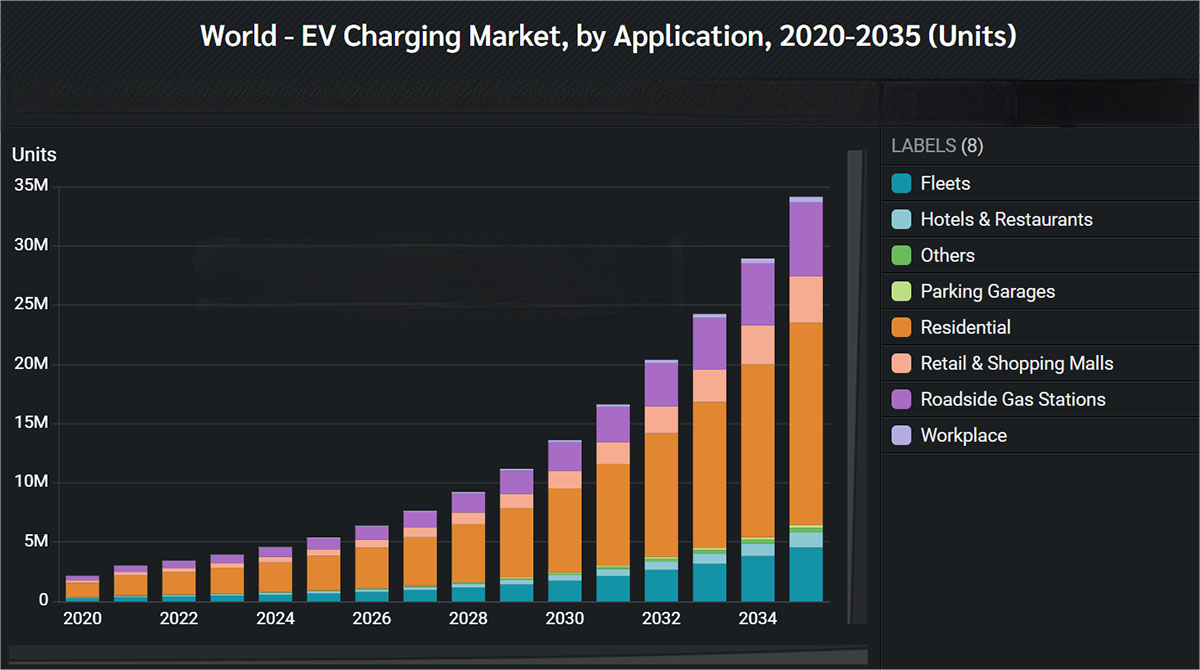
As electric vehicles become increasingly mainstream, the demand for convenient, fast, and reliable charging infrastructure is skyrocketing. For entrepreneurs and investors, 2025 presents an unprecedented opportunity to enter the booming EV charging market. However, success requires more than just installing chargers — it calls for a strategic approach covering market analysis, choosing the right business model, partnering with quality suppliers, and effective execution.

In this article, we break down the process into six essential steps to help you confidently start your own EV charging business and position yourself for growth in this fast-evolving industry.
Step 1: Understand Why 2025 Is the Perfect Time to Enter the Market
The electric vehicle (EV) industry is accelerating faster than ever. With global EV sales reaching new heights in 2024 and projections showing continued rapid growth into 2025, the demand for charging infrastructure has never been greater. As more consumers switch to electric, the need for reliable and accessible charging solutions is skyrocketing, creating a lucrative opportunity for businesses ready to meet this surge in demand. In 2024, global EV sales reached approximately 17.1 million units, a year-on-year increase of over 25%. Experts forecast that by 2025, EVs could make up more than 25% of all new car sales worldwide. China leads this surge, accounting for over half of global EV sales, while markets in Asia, Latin America, and Africa are rapidly catching up.
Despite some slowdown in Europe and North America, the demand for EVs is growing worldwide, creating an urgent need for expanded charging infrastructure. The number of public charging points worldwide surpassed 5 million in 2024, growing by 30% from the previous year, but the supply still lags behind demand. For instance, in China, there is roughly one public charger for every 10 EVs, whereas in the U.S., the ratio is about one charger for every 20 vehicles — highlighting significant opportunities for expansion.
Government policies and investment incentives also accelerate the market. The U.S. plans to increase public chargers from 400,000 to 3.5 million by 2030, and Europe enforces strict regulations requiring fast chargers every 60 km on highways. Globally, the EV charging station market size was valued at nearly $40 billion in 2024, with a projected compound annual growth rate (CAGR) of 24% over the next decade.

Step 2: Choose Your Market Segment and Business Model Public Fast Charging Stations
Fast chargers (150 kW and above) located along highways, city centers, and shopping malls serve high-traffic users. These stations generate strong revenues but require significant upfront investment and careful site selection.
Residential and Workplace Charging
Partnering with property developers, office buildings, and fleets to install slower chargers in parking lots can ensure stable, recurring usage. This segment requires less capital but can build long-term customer loyalty
Portable and Home Charging Devices
Providing portable EV chargers and home charging equipment taps into the growing EV owner market that values convenience and flexible charging options.
Step 3: Design a Revenue and Partnership Strategy
Pay-per-use Charging:Users pay per kWh consumed plus any service fees.
Subscription or Membership Models:Offer monthly plans with unlimited or discounted charging.
Value-Added Services:Include advertising, retail partnerships, vehicle maintenance, or loyalty programs.
Technology platforms enabling app-based charging, smart billing, and real-time monitoring are critical for smooth operation. Collaborations with property owners, energy providers, and vehicle manufacturers can unlock subsidies, site access, and customer channels.
Step 4: Select Reliable Suppliers and Partners
When choosing your hardware and service suppliers, focus on:
Certifications and Quality Assurance:UL, CE certifications and rigorous in-house and third-party testing.
Local Service and Support: Regional service teams for timely maintenance and customer care.
Production Capacity and Reliability: Stable manufacturing and delivery schedules.
R&D and Innovation: Ability to provide fast-charging, smart connectivity, and software upgrades.
Proven Track Record: References from existing customers and solid reputation.
Step 5: Estimate Costs and Financing Options
|
Item |
Estimated Cost (USD) |
|
150 kW DC Fast Charger + Installation |
$50,000 - $100,000 |
|
Civil Works (cabling, site prep) |
$20,000 - $50,000 |
|
Software & Network Integration |
$5,000 - $15,000 |
|
Operations & Maintenance (monthly) |
$5,000 - $10,000 |
Initial investment for a single fast-charging site typically ranges between $100,000 and $200,000. Operational expenses include electricity, maintenance, rental fees, and platform services. Depending on utilization rates, many stations recover costs within 2-4 years.
Government grants, subsidies, and public-private partnerships (PPP) are valuable avenues to reduce upfront costs and accelerate deployment.
Step 6: Implementation Roadmap
Market Research: Identify target cities or regions with growing EV penetration and insufficient charging infrastructure.
Site Selection: Analyze potential locations based on traffic flow, accessibility, and competitor density.
Engage Stakeholders: Secure agreements with property owners, utilities, local governments, and other partners.
Vendor Selection: Evaluate multiple suppliers for equipment quality, price, and support.
Installation and Testing: Complete construction and system integration with a pilot testing phase.
Launch and Marketing:Introduce your charging service through EV apps, loyalty programs, and local promotions.
Scale Up:Use operational data to optimize pricing, expand locations, and improve customer experience.
Why Start Your EV Charging Business Now?
The industry is entering a critical growth phase driven by:
Rising EV adoption worldwide pushing demand for fast, reliable charging.
Infrastructure gaps in many global markets that still lack sufficient charging points.
Government incentives and policies lowering investment risk.
Growing consumer preference for convenient and smart charging solutions.
Starting an EV charging business in 2025 positions you to capture a rapidly expanding market. By carefully selecting locations, partnering with reliable suppliers, and designing customer-centric offerings, you can build a sustainable and profitable enterprise.
If you’d like more detailed advice tailored to your region or budget, feel free to reach out!